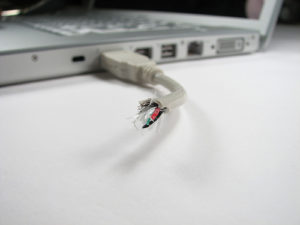
I didn’t start using a computer full-time until 2001 when I landed in the college dorms back at East Texas Baptist University. I immediately set out to create something memorable for the university in the form of student communication: an instant messenger based on school emails. That never took off, as I barely understood how to set up my email account in Outlook Express. Instead, I focused more on a social network (before that term existed), and running a web server from my PC in my dorm room.
Fast-forward 4 years.
The social network I started in college migrated to a global website. I also now owned a PocketPC, a laptop, and had a corporate desk job. During my off time (and sometimes my “on time”) I would work on the code for the web pages. The biggest problem I had was making sure the files I changed in one place were propagated to all other places.
It was just my luck: I became a beta tester for Microsoft Office. My favorite office program for that suite:Â Groove. Microsoft Groove was the very, very early fore-runner of what is now known as Windows Live Mesh. It was a desktop client that sync’d your files to the Groove Server. From there, conflicts were resolved, you could chat with other people in the work-group, and everything stayed in sync.
Fast-forward another 4 years, and you’d find me keeping my bookmarks sync’d with Del.icio.us, my web pages with Windows Live Mesh, my email in Thunderbird, my finances with Microsoft Money, and my IM contact lists with Digsby.
The one thing all those have in common: they all require a piece of software to keep them sync’d to the cloud. Over the last 2 years, I’ve been migrating as much as I can to the cloud, and exploring the available software replacement options as I find them.
So in making this transition to Living in the Cloud, first things first: cut the cord. Figure out what you do on a daily basis, and how you’d go about doing it if your only software was the Google Chrome OS.
Luckily for you, you can also experience the Chrome OS experience, even if you didn’t get one of the Google Laptops:
Imagine starting up your computer, logging in with your Google Account, and the first and only thing that opens is your internet browser: Google Chrome. Now, try to work. Attempt to go about your daily routine without access to any Windows network shares, Microsoft Office programs, an abhorrent collection of randomly placed desktop icons, or really anything you would normally launch from a taskbar/start menu/icon on your computer. Everything you do must be done in the browser.
Once the stress of not being able to minimize the browser has subsided, then start thinking about where the data is stored that you want – and where you can put it online to get it. So, first things first: start finding online resources to store all the things you think you have to have software to use.
I’ll start documenting my changes once I’ve picked them. I have a few resources I’m currently testing, but I may have to create my own solutions to actually achieve what I want in the end.
